Steroids vs. Shockwave Therapy
Steroids vs. Shockwave Therapy:
What Is The Best Choice For Me?
When it comes to treating musculoskeletal conditions, patients and medical providers often weigh the benefits and risks of various therapies. Among the most discussed treatments are steroid injections and shockwave therapy. Although both approaches aim to alleviate pain and improve function, they are fundamentally different in their action, risks, and potential benefits.
Steroid Injections: A Quick Fix with a Catch?
Corticosteroid injections are a staple in the management of inflammatory conditions. By injecting steroids directly into the affected area, doctors aim to reduce inflammation and provide rapid pain relief. This can be particularly beneficial for conditions like rheumatoid arthritis, tendinitis, and bursitis.
Pros of Steroid Injections:
Fast-Acting Relief: Steroids can reduce inflammation quickly, offering significant pain relief shortly after the injection.
Targeted Therapy: Injections deliver medication directly to the inflamed tissue, providing local treatment without systemic side effects.
Accessibility: They are widely available and can be administered during a simple office visit.
Cons of Steroid Injections:
Temporary Solution: While effective for short-term relief, steroids do not address underlying causes and may offer only temporary benefits.
Potential for Tissue Damage: Repeated steroid use can lead to weakening or damage to the tissues, potentially exacerbating chronic conditions.
Side Effects: Possible side effects include local bleeding, infection, or allergic reactions, and systemic effects like elevated blood sugar levels, especially with repeated use.
Shockwave Therapy: A Sound Solution?
Shockwave Therapy, on the other hand, is a non-invasive treatment that uses acoustic waves to promote healing in injured tissues. It's commonly used for conditions such as plantar fasciitis, tendinopathies, and other chronic musculoskeletal disorders.
Pros of Shockwave Therapy:
Non-Invasive: Shockwave therapy is administered externally, eliminating risks associated with injections or surgery. NO NEEDLES!
Promotes Healing: Unlike steroids that mainly reduce inflammation, shockwave therapy can stimulate the body's natural healing processes by increasing blood flow and cellular activity in the treated area.
Long-Term Benefits: Research suggests that the benefits of shockwave therapy can be long-lasting, addressing not just symptoms but also contributing to actual healing. Even following your last Shockwave Therapy treatment the positive benefits and improvement can continue!
Cons of Shockwave Therapy:
Multiple Sessions Required: Patients typically require a series of treatments to achieve optimal results.
Delayed Onset of Relief: Pain relief and functional improvement may take longer to manifest compared to steroid injections although improvements occur significantly after the 2nd and 3rd treatment.
Availability: Access to shockwave therapy may be limited in some regions, and it is not always covered by insurance.
The Difference Lies in the Approach
The core difference between steroids and shockwave therapy is their approach to treatment. Steroids offer a pharmacological approach to dampen inflammation rapidly, often providing a ‘quick fix’. That said, it is the lidocaine or other numbing agent that gives the immediate effect while steroids take days to create an effect. Shockwave therapy, by contrast, is a physical modality that encourages the body to repair itself over time.
Steroids Are Degenerative; Shockwaves Are Regenerative
The core difference between steroids and shockwave therapy is their approach to treatment. Steroids offer a pharmacological approach to dampen inflammation rapidly, often providing a ‘quick fix’. That said, it is the lidocaine or other numbing agent that gives the immediate effect while steroids take days to create an effect. Shockwave therapy, by contrast, is a physical modality that encourages the body to repair itself over time.
Conclusion: What Treatment Is Best For Me?
Historically when Shockwave Therapy has been compared to Steroid Injections, Shockwave Therapy has outperformed steroids time and time again. A recent study comparing bad back pain patients in 3 treatment groups; steroid injections, Shockwave Therapy, and Radiofrequency Lesioning/Ablation or burning the nerves, showed that Shockwave and nerve ablation outperformed steroid injections, even months later!
Deciding between steroid injections and shockwave therapy does not have to be an either/or proposition. You can still have Shockwave Therapy treatment following a steroid injection but there are risks. A study conducted with Shockwave Therapy to the Achilles tendon following steroid injections showed an increase in tendon rupture. This may have been due to a greater risk of tissue damage and tear with repeated steroid injections.
As with all medical treatments, the choice should be personalized to you and your condition, your goals, and your past responses to previous treatments.
It is important to remember that whether you and your provider choose steroids or Shockwave Therapy, getting an underlying diagnosis and correcting the orthopedic or joint and tissue restrictions through hands-on treatments, as well as corrective exercise to restore you to normal motion, is the most important part of recovering from a chronic injury.
Start With An In Depth Evaluation With Hands-On Treatment And Exercise
Ultimately, whether to lean toward the ‘immediacy’ of steroids or the regenerative potential of shockwave therapy should be a decision made in partnership with a healthcare provider. With advances in both pharmacological and physical therapies, patients today have more options than ever to help them get back to their best selves.
WANT TO CONNECT WITH US MORE QUICKLY?
YOU CAN GIVE US A CALL!
Here are what patients are saying about SWT.
It's Time For Less Pain!
Get started with an evaluation!
The Cornerstone Physical Therapy Doctors start with an evaluation to get a baseline of your pain and function. This may include a Diagnostic Ultrasound to check your injured area for tendon or joint damage, inflammation and swelling, and depth of the treatment area, to plan a successful Shockwave Therapy treatment series.
The cost of the evaluation is $100. Click the link below to connect with our team and schedule your first session!




